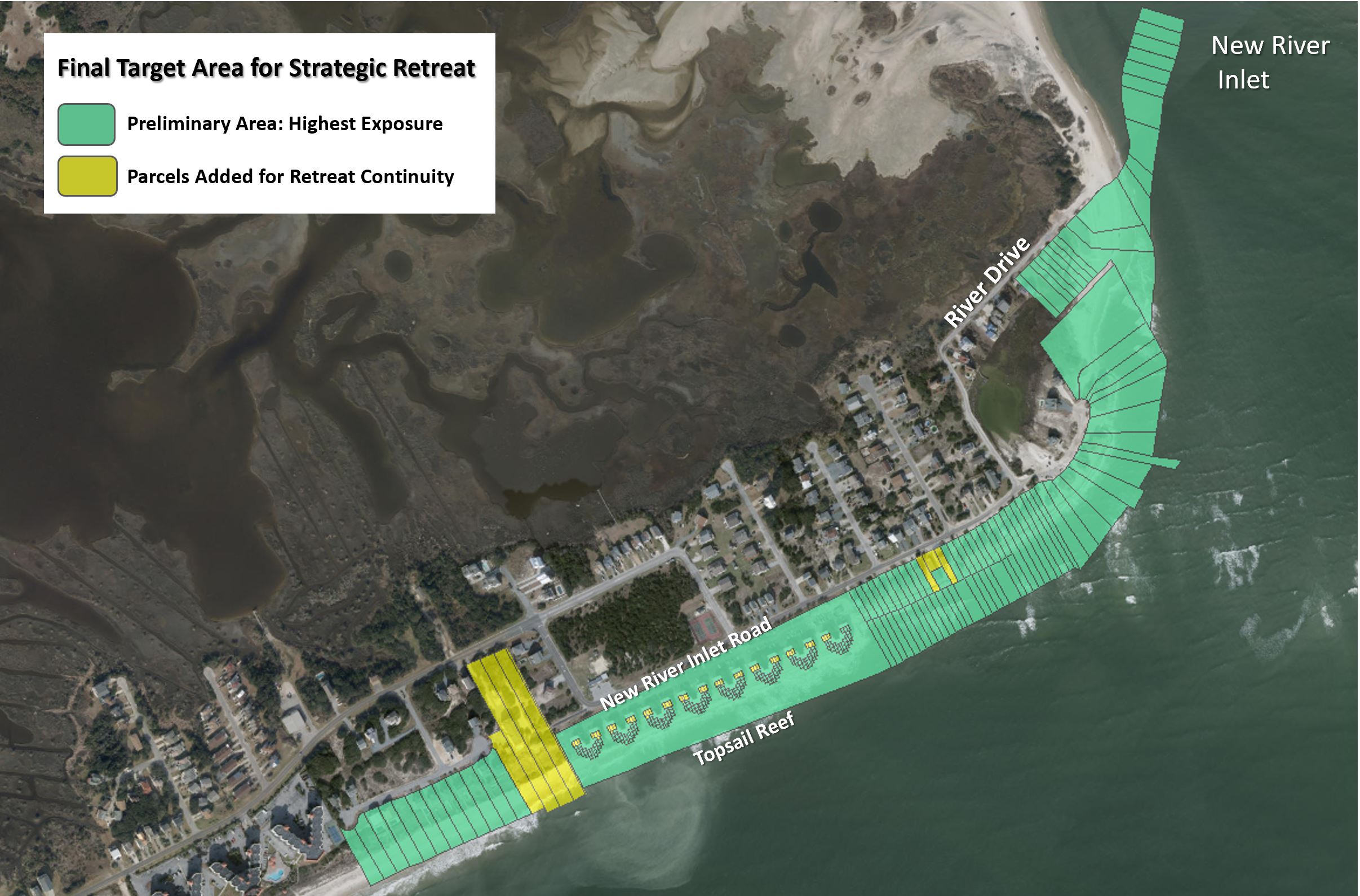Program for the Study of Developed Shorelines
Science. Policy. Education. Outreach. Coastal.
Coastal Hazards & Targeted Acquisitions: A Reasonable Shoreline Management Alternative for North Topsail Beach, North Carolina Case Study
This study is the first of several case studies to be released by the Program for the Study of Developed Shorelines examining the feasibility and economics of targeted acquisition strategies in oceanfront, resort communities. Buyouts of vulnerable properties have become an increasingly popular tool for reducing future exposure in flood-prone communities across the U.S. However, proactive, targeted buyouts have not been common with oceanfront, investment (largely) properties despite the fact that these properties represent the “first line” of tropical storm exposure on the U.S. East and Gulf Coasts.
Our approach is to first examine the exposure of properties on North Topsail Beach, North Carolina to coastal hazards using a Vulnerability Assessment Protocol developed for examining infrastructure vulnerability in the National Park Service. The most exposed properties are identified and a coherent, contiguous group are selected for a fiscal analysis regarding a buyout’s costs and impacts. The analysis of costs includes purchasing the properties, removal costs, and lost tax revenues. The quantifiable benefits include reduced expenditures for coastal protection, engineering design/permitting, and maintenance.
For North Topsail Beach, North Carolina, the costs ($54.8 million with inflation) and benefits ($57.6 million) represent a savings of at least $2.8 million over 30 years. We have used a very conservative approach to estimating the costs. We assume that owners will receive full, assessed value for their property and that all properties will be fully viable for 30 years (given the exposure to storms and hazards of the target area, this is highly unlikely even with coastal protection). Finally, we assume that the properties will appreciate in value over the time period, again, a generous assumption.
The fiscal analysis does not include many unquantifiable benefits from the proposed targeted acquisition. These include the transfer of amenity value to other properties, reduced emergency management costs for the municipality, reduced need for consulting engineering fees, improved beach access for all residents and renters, and, quite frankly, no more ugly sand bags and a return of a recreational beach that all residents and guests can enjoy.
The best argument for the proposal may be this: wouldn’t it be nice if a municipality like NTB could stop spending all of their time, energy, administrative hours, and money on 7% of the tax base (the at-risk properties examined in this report) and turn all of those resources loose on the 93% of the tax base that will be much more sustainable over the next 30 years? Slightly changing the map of this community with a targeted acquisition would not mean the end to a prosperous beach town. Far from it. This proposal is a plan for strengthening the vast majority of the tax base for the long run.
Our goal for this series of reports is philosophical as much as practical. Invariably, buyout plans in oceanfront communities are viewed as too costly or impractical to be seriously considered. It is typical for the alternatives analysis in a storm protection EIS to dismiss the idea of targeted acquisitions in a paragraph or two. We hope that coastal communities will give more serious consideration to these buyouts as a beneficial management tool, and we hope that these case studies will spur meaningful discussions.
This proposal represents a first cut at how one might approach a scientific and fiscal analysis of targeted acquisitions for one such community — North Topsail Beach, North Carolina. The analysis shows that, in this case, the quantifiable benefits and costs result in a savings over the next 30 years. If outside funds (state or federal) are available for the buyout, then it becomes a very attractive prospect for the municipality. Even if outside funds are not available, the project would have significant benefits and is worth serious consideration. There are many unquantifiable benefits to these targeted acquisitions; however, the real benefit will be a chance to ensure the longer-term economic vitality of the more sustainable portions of the community. This is a way to strengthen North Topsail Beach, not diminish it.

Program for the Study of Developed Shorelines
Old Student Union
Western Carolina University
Cullowhee, NC 28723

